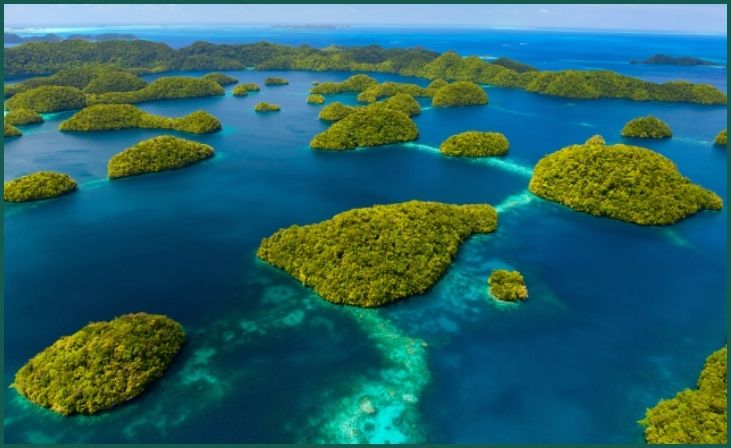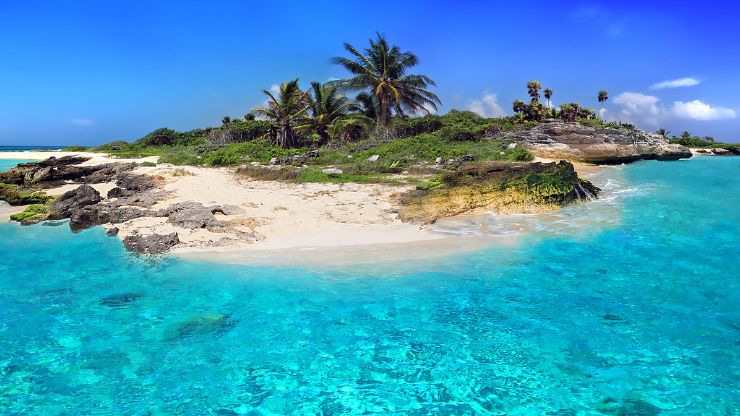Welcome to our exploration of the largest U.S. Virgin Island, a pristine paradise that remains largely unspoiled thanks to its eco-friendly ethos. With its lush rainforests, pristine beaches, and vibrant coral reefs, this island exemplifies the beauty and importance of sustainable tourism.
Join us as we delve into the unique initiatives and practices that have helped preserve its natural wonders, from conservation efforts to eco-conscious accommodations and activities. From hiking through protected forests to snorkeling in crystal-clear waters, there’s no shortage of ways to immerse yourself in the island’s stunning natural environment while minimizing your ecological footprint. Come discover the beauty of this eco-friendly haven and learn how you can contribute to its preservation for future generations to enjoy.
Table of Contents
ToggleLargest U.S. Virgin Island
1. St. Croix: A Gem of Conservation

St. Croix, the largest of the U.S. Virgin Islands, boasts a rich tapestry of biodiversity, from its coral reefs to its tropical forests. This island takes pride in its conservation efforts, with protected areas like the Buck Island Reef National Monument offering sanctuary to endangered species and vibrant marine life. Through initiatives such as marine protected areas, habitat restoration projects, and community engagement programs, St. Croix remains committed to preserving its natural heritage for future generations to enjoy. Visitors can explore pristine beaches, dive into crystal-clear waters, and immerse themselves in the island’s cultural and ecological diversity, all while supporting sustainable tourism practices.
Also Read- 10 Budget-Friendly International Destinations and the Best Time to Visit Them
2. St. Thomas: Balancing Tourism and Sustainability
St. Thomas, known for its bustling harbor and vibrant culture, has managed to strike a delicate balance between tourism and environmental preservation. Efforts such as sustainable tourism initiatives and beach clean-up campaigns demonstrate the island’s commitment to safeguarding its natural treasures. With initiatives focused on waste management, renewable energy, and coastal conservation, St. Thomas is setting an example for responsible tourism practices in the Caribbean region. Visitors can enjoy a range of eco-friendly activities, from snorkeling in protected marine parks to exploring scenic hiking trails, while contributing to the island’s sustainable development goals.
3. St. John: A Sanctuary for Nature Enthusiasts
St. John, with over half of its landmass designated as Virgin Islands National Park, stands as a testament to conservation-minded governance. Visitors can explore pristine beaches, hike through lush forests, and snorkel in crystal-clear waters, all while appreciating the island’s dedication to preserving its ecological integrity. Through partnerships with local communities, conservation organizations, and government agencies, St. John remains committed to protecting its natural heritage for future generations. Sustainable tourism practices, such as low-impact visitor experiences and wildlife monitoring programs, ensure that the island’s natural wonders can be enjoyed responsibly for years to come.
Don't just scroll, subscribe!
BuzzTrail's unique web-stories are the cure for boredom you've been waiting for.
4. Water Island: A Hidden Ecological Gem

Water Island may be the smallest of the U.S. Virgin Islands, but it packs a punch in terms of ecological significance. With its serene beaches and protected wetlands, this island offers a tranquil retreat for nature lovers seeking solace in its unspoiled landscapes. Efforts to preserve biodiversity and promote sustainable tourism on Water Island are evident in initiatives such as habitat restoration projects and eco-friendly accommodations. Visitors can kayak through mangrove forests, birdwatch along scenic trails, and relax on pristine beaches, all while supporting conservation efforts to protect this hidden ecological gem for future generations to enjoy.
5. Hassel Island: A Historic and Environmental Treasure
Hassel Island, a designated national historic landmark, blends rich cultural heritage with environmental stewardship. Visitors can explore ruins from its colonial past while admiring its diverse flora and fauna, all within a framework of sustainable tourism practices. Through initiatives such as archaeological conservation projects, habitat restoration efforts, and educational programs, Hassel Island remains committed to preserving its unique heritage and natural beauty. By balancing conservation with responsible tourism, this island serves as a model for sustainable development in the U.S. Virgin Islands, where cultural preservation and environmental protection go hand in hand.
6. Lovango Cay: Preserving Pristine Wilderness
Lovango Cay, though privately owned, remains committed to preserving its natural splendor. With limited development and a focus on low-impact tourism, this island exemplifies how private initiatives can contribute to the conservation of delicate ecosystems. Efforts to protect coral reefs, restore native habitats, and minimize carbon footprints ensure that Lovango Cay remains a haven for wildlife and a sanctuary for visitors seeking solace in its unspoiled wilderness. By promoting sustainable practices and environmental awareness, Lovango Cay sets a precedent for responsible stewardship of fragile island ecosystems in the Caribbean and beyond.
For More- The Most Stunning Natural Attraction in Each State
7. Great St. James: Striving for Sustainable Development

Great St. James, with its stunning beaches and thriving marine life, is at the forefront of sustainable development in the U.S. Virgin Islands. Through initiatives such as renewable energy projects and marine conservation efforts, the island is paving the way for a more environmentally conscious future. By promoting eco-friendly practices such as reef-friendly sunscreen use, waste reduction, and responsible fishing practices, Great St. James seeks to protect its natural resources while supporting the local economy. Visitors can immerse themselves in the island’s scenic beauty, from vibrant coral reefs to lush mangrove forests, all while contributing to its sustainability goals and preserving its ecological integrity for generations to come.
Conclusion
In conclusion, the U.S. Virgin Islands offer a diverse array of ecological treasures, each with its unique blend of natural beauty and conservation efforts. From the rich biodiversity of St. Croix to the pristine wilderness of Lovango Cay, these islands exemplify the importance of environmental stewardship and sustainable tourism practices. By balancing conservation with responsible development, the islands strive to preserve their natural heritage while offering unforgettable experiences for visitors. Whether exploring protected marine parks, hiking through lush forests, or relaxing on secluded beaches, travelers can immerse themselves in the islands’ ecological wonders while supporting efforts to protect and sustain them for future generations.
FAQs
Are the U.S. Virgin Islands safe to visit?
Are the U.S. Virgin Islands safe to visit?
Yes, the U.S. Virgin Islands are generally safe for visitors. However, travelers should exercise standard safety precautions, such as staying aware of their surroundings and avoiding isolated areas at night.
What activities can I enjoy in the U.S. Virgin Islands?
What activities can I enjoy in the U.S. Virgin Islands?
The U.S. Virgin Islands offer a wide range of activities, including snorkeling, diving, hiking, sailing, and cultural experiences. Visitors can explore national parks, historic sites, and pristine beaches, or simply relax and enjoy the natural beauty of the islands.

